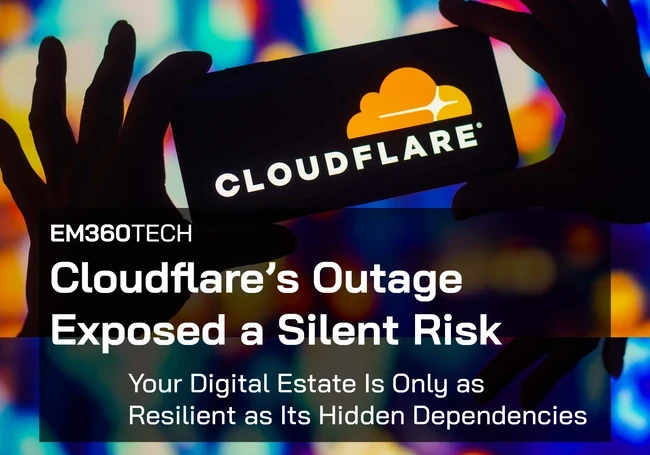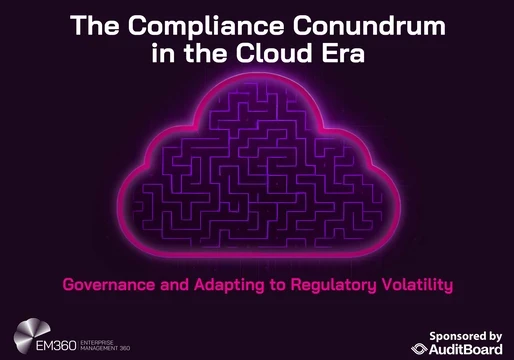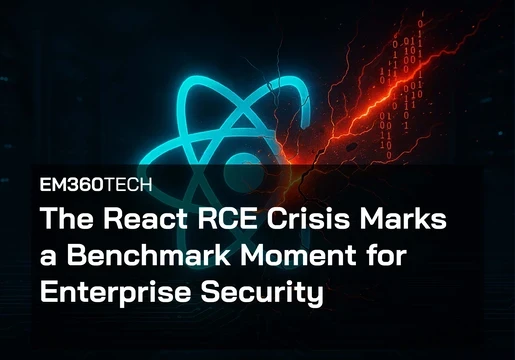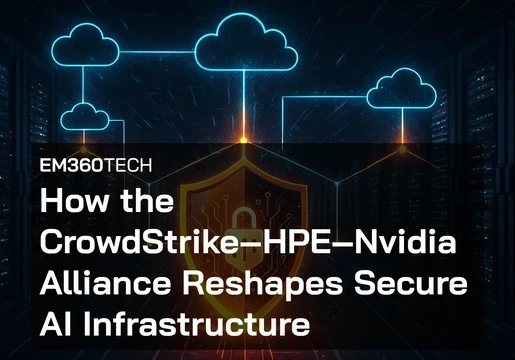When the Cloudflare outage hit on 18 November 2025, it looked and felt like a major attack in motion. Banking apps froze. AI tools like ChatGPT surfaced Cloudflare 5xx errors. Social platforms flickered in and out. Even outage trackers buckled under the load.
For many teams, the pattern resembled the early stages of another hyperscale DDoS attack: sudden spikes, inconsistent recoveries, and familiar services failing in synchrony.
For a few hours, a routine weekday turned into a live case study in how quickly global infrastructure can destabilise. Cloudflare later confirmed it was not an attack at all, but an internal configuration change that cascaded through its bot management and core proxy layers before traffic stabilised again.
From a boardroom perspective, that detail matters. This was not a breach in the traditional sense. It was a failure in the invisible plumbing that much of the digital economy depends on. The incident exposed a simple truth: your digital estate is only as resilient as the hidden dependencies you rarely discuss at board level.
That is the lens that matters now: not what broke inside Cloudflare, but what the outage revealed about scale, trust, and blind spots inside your own architecture.

The Anatomy of a High-Profile Failure
At a technical level, the chain reaction was brutally simple.
Cloudflare engineers rolled out a change to database permissions in a ClickHouse cluster that powers their bot management feature pipeline. That change caused a query to return duplicate rows when building the “feature file” used by the bot detection model. The file quietly doubled in size.
Across Cloudflare’s CD network, the software responsible for routing traffic reads that feature file and pre-allocates memory based on an internal limit. The expanded file breached that threshold. Instead of degrading gracefully, the bot module hit a hard limit and panicked. The result was a surge of HTTP 5xx errors and broken sessions across the core proxy layer for any traffic that depended on bot scoring.
From the outside, none of that complexity was visible. What users saw was a scattered pattern of disruption:
- “Internal server error on Cloudflare’s network.”
- “Please unblock challenges.cloudflare.com to proceed.”
- Login flows that simply refused to complete.
- Services that worked for a minute, then failed again as good and bad configurations rolled through the network in five-minute waves.
For some organisations, that meant losing access to high-profile tools. For others, it meant far more operational pain, such as staff being locked out of internal dashboards or customers unable to reach payment gateways. One failure at a single vendor turned into a global slowdown that cut across geographies, sectors, and business models.
Executives do not need the ClickHouse query to understand the lesson. If your architecture relies on an unseen layer such as Cloudflare for CDN, security services, or bot mitigation, you inherit its failure modes whether you understand them or not.
The Broader Reality of a Single-System Internet
The timing matters. The Cloudflare incident arrived roughly a month after a significant AWS outage, which had already forced many teams to confront how much of their core business runs on a handful of hyperscale providers.
Taken together, these events underline a pattern. The digital supply chain is no longer a neat, linear hierarchy of vendors. It functions as a single, deeply connected system where:
- SaaS platforms sit on top of hyperscale clouds
- Security services and CDNs front those platforms
- Identity tools, payment processors, analytics pipelines and AI services are woven through the middle
When an infrastructure provider like Cloudflare experiences a failure in a core proxy layer, the impact does not stay neatly contained. It jumps across that mesh of dependencies. Services that appear unrelated from a customer perspective begin failing in very similar ways because they share the same underlying path to the internet.
Many enterprises only discovered their reliance on Cloudflare when their customer-facing services went dark or their staff could not log into critical tools. Some were not Cloudflare customers at all, but they depended on SaaS platforms that use Cloudflare for security and distribution.
That is the quiet risk the outage exposed. Digital concentration risk is now an operational exposure that boards need to treat with the same seriousness as concentration in a financial portfolio. If a single provider’s failure can stall your revenue operations, customer experience, or incident response, then that provider is not just “part of the stack”. It is a systemic dependency.
The Governance Gap Behind Cloud-Scale Change Control
Cloudflare’s problem started with a permissions rollout. Not a zero-day exploit. Not a nation-state attacker. A configuration change.
Every large enterprise performs similar changes across databases, identity systems, and security tools every day. That is exactly why this incident needs to be read as a governance story as much as a technical one.
There are specific questions boards should be asking their own teams now:
- How is blast radius tested before changes go live?
Are there environments that faithfully mirror production behaviour at scale, or are critical behaviours only truly tested in live traffic?
- How quickly can a bad configuration be rolled back without improvisation?
Are rollback paths scripted, automated, and rehearsed, or would engineers still be deciding which levers to pull in the middle of an outage?
- Do we have kill switches and graceful degradation paths for critical modules?
If a specific feature fails, does it take the whole core proxy or service layer with it, or can it be disabled cleanly while traffic continues to flow?
- Are dependencies tested under real failure conditions, not only during patch cycles?
Have you run a controlled test where a critical third-party service is deliberately “failed” so you can see what breaks and who notices first?
Cloudflare will harden its own systems because it cannot afford not to. The more important question for your organisation is whether similar hidden assumptions exist inside your own infrastructure and that of your key suppliers.
Resilience is not only about defence against external threats. It is about disciplined, low-risk change control across the entire ecosystem your business depends on.
The Hidden Exposure in Downstream and Third-Party Dependencies
When Cloudflare went down, it did not only affect customers who pay Cloudflare directly. It also affected the layers built on top of it.
Identity and access tools that use Cloudflare for front-door security began timing out or blocking legitimate sessions. Payment providers, marketing platforms, content management systems and AI tools that rely on Cloudflare’s CDN and security stack experienced degraded performance or full outages. Internal dashboards and admin consoles that sit behind these services failed at exactly the moment teams needed them most.
Many enterprises discovered that their proud “resilience posture” was only as strong as the least tested component in their vendor chain. Business continuity plans assumed SaaS providers would remain available or would fail independently. The outage showed how easily they can fail together.
For a board, this matters because risk rarely lives where the slide deck says it does. It often lives in:
- A niche tool that controls authentication flows
- A single CDN that fronts multiple revenue-critical services
- A status page that depends on the same infrastructure as the service it reports on
- A security product that has no graceful fallback when its upstream provider is unavailable
Risk does not exist only where you expect it. It exists where you are not looking. The Cloudflare outage forced that into view.
Enterprise Priorities for Resilience Engineering
The lesson from 18 November is not to abandon global infrastructure providers. It is to treat them as critical components that require conscious design around failure, not blind trust.
There are several priorities leaders should be elevating now.
Adopt multi-provider CDN and edge strategies where mission critical
Not every workload justifies multi-CDN complexity, but revenue-critical and customer-facing services often do. Architecting for multi-CDN or at least rapid failover reduces the risk of a single provider outage turning into a full-scale customer incident.
Run scenario exercises for third-party failures
Most resilience testing still centres on internal incidents. It is time to run drills that start with the prompt: “Cloudflare fails. We do not. What happens next?” Use that to uncover which services fail together, which teams get stuck, and how quickly accurate information reaches the executive team.
Map indirect dependencies, not just direct contracts
Vendor lists alone do not reveal your real exposure. Ask SaaS providers which CDNs, security services and infrastructure platforms they depend on. Assess whether multiple critical services share identical upstream providers and plan accordingly.
Invest in observability that spans your ecosystem
You cannot manage what you cannot see. Modern observability should help you spot unusual patterns such as simultaneous 5xx errors across multiple services, and distinguish between an internal fault and a provider outage within minutes, not hours.
Decouple customer communication from third-party dependencies
Status pages, notification channels and incident updates should not depend on the same providers that are failing. If your own outage page is unavailable during a vendor incident, you lose control of the narrative and increase reputational damage.
Across all of this sits the same conclusion: resilience is not purely an engineering problem. It is an organisational one. Engineering teams can build the patterns, but leadership decides whether resilience is funded, rehearsed and held to account.
Final Thoughts: Resilience Begins with Knowing What You Depend On
The November Cloudflare outage exposed a universal truth about modern digital business. Enterprises are deeply connected to infrastructure they do not control, operated by providers that can and sometimes will fail through the most ordinary of changes.
Robust resilience now depends on four things: clear visibility into your digital supply chain, disciplined change control, diversified architecture where it matters most, and board-level ownership of dependency risk. You cannot eliminate every failure, but you can decide whether the next one becomes a headline outage or a contained inconvenience.
For leaders strengthening their resilience strategy, EM360Tech will continue to surface the signals and strategic insights that matter most, from cloud incidents to boardroom responses, so that your organisation is shaping its next move before the disruption arrives.







Comments ( 0 )